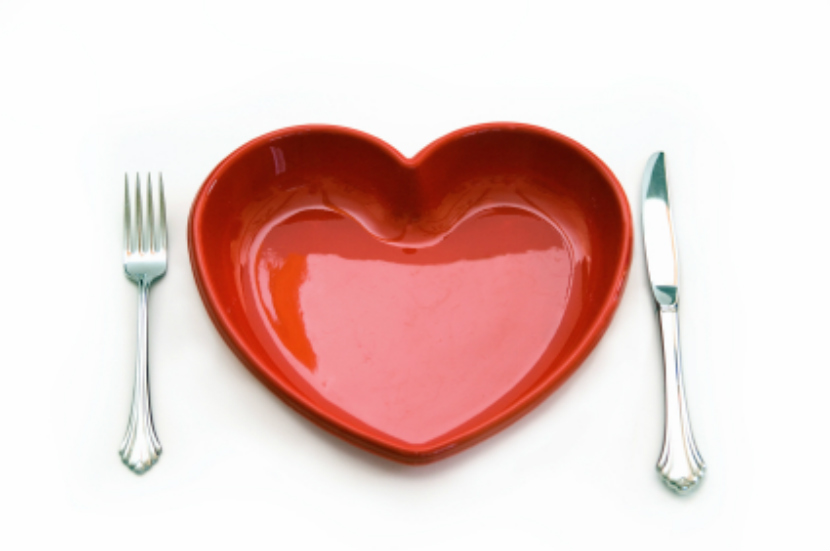
February is Heart Month - Get ready to eat healthier one day at a time! Our 28 nutrition tips for Heart Month will help you cook with more vegetables and fruit, less sodium (salt), more whole grains and more fibre. Join the challenge and focus on one tip per day.
February Heart Health Challenge:
- Have a variety of canned and frozen vegetables and fruit on hand. Canned baby corn tastes great in a stir-fry, frozen berries are perfect for a smoothie, and frozen broccoli is ready to steam.
- Add shredded carrot, grated zucchini and other vegetables to spaghetti sauce. This kid-friendly recipe for Mac and Squeese sneaks in two whole cups of butternut squash.
- Pair each of your main dishes with vegetables or fruit. Here are three recipes to get you started: Sweet Chili Tofu Stir-fry, Mango Chicken Wraps, and Tea Poached Salmon with Fruit Salsa.
- Steam, bake, broil or grill meat, poultry and fish instead of frying it. Try this delicious broiled, low fat Tandoori Haddock, which cooks in just 10 minutes.
- Keep containers of diced mushrooms, red peppers and green beans in the vegetable crisper. Now, they are ready to be added to an omelette, a brown rice pilaf or a can of soup.
- Cook pasta, rice or hot cereal without adding salt. Rinse canned veggies and canned beans, peas and lentils under cold water to wash away some of the sodium.
- Use brown rice or whole wheat flour when your recipes call for white rice or white flour.
- Season vegetables with herbs and spices instead of butter or a creamy sauce. A teaspoon of curry powder helps to bring out the wonderful flavour in Grilled Asparagus and Sweet Potato with Curry.
- Eat more plant-based proteins – they are good for your heart because they have fibre and other importantnutrients. Try beans, lentils, tofu, edamame, tempeh, nuts and seeds. Instead of using meat, try beans, like in these Avocado, Roasted Squash and Black Bean Tacos.
- Use applesauce to replace some of the fat in your baked goods. Applesauce is the secret ingredient in these moist Apple Cinnamon Baked Muffins.
- Look for recipes that use fruit as the main ingredients such as this refreshing Avocado and Fruit Salad with Basil and Honey.
- Look for recipes that use whole grains you’ve never tried before, such as Quinoa and Lentil Pilaf.
- Cook with a non-stick pan and use these other heart healthy kitchen tools.
- Make your own salad dressing with oil, flavoured vinegars and fresh or dried herbs.
- Line baking pans with parchment paper and use muffin tin liners instead of greasing the pans.
- Pour a can of beans into a soup, salad or casserole. It’s that easy! This Minestrone Soup uses plenty of veggies and a can of navy beans to give it an extra fibre boost.
- Taste your food before adding salt. Flavour food with herbs, spices, garlic, ginger, onion, vinegar and lemon and lime juice.
- Leave the peel on. When you peel an apple, you lose about 1/3 of the fibre.
- Add a handful of pot barley or wild rice when making your favourite soup for added fibre.
- Add ground flax to smoothies, salads and muffins. Use granola or oats, whole wheat flour, and dried fruit to make these fibre-packed Protein Bars.
- Make creamy soups with evaporated skim or 2% milk instead of cream. This Chicken and Corn Chowder Soup tastes rich but has less fat than you think.
- Try making your own dips, spreads and even desserts. Your family and guests will be impressed by this Apple Maple Cheesecake which has much less saturated fat than a traditional cheesecake.
- Prepare your own meals often, using little or no salt. Use sodium reduced or lower sodium versions of soy sauce, ketchup, condiments, soups, crackers and canned fish.
- Make your own trail mix with whole grain breakfast cereal, dried fruit, unsalted nuts and seeds and plain popcorn (it’s a whole grain too!).
- Choose beverages with no added sugar. If you have difficulty drinking water try naturally flavoured sparkling water or add fruits, lemon or herbs like mint to plain water.
- Add leafy greens like spinach, kale or Swiss chard to soups, stews, smoothies, sandwiches and salads for an extra boost of nutrients. Try this spinach and feta quiche.
- Keep cut up raw veggies like carrots, celery, cucumber and peppers in the fridge for a quick nutritious snack when hungry. Pair with this Quick Lentil Hummus for some protein.
- Meal plan for the week. Making a meal plan will help you stay on track with your goals and make grocery shopping easier. Check out some of our Menu Planning articles and sample meal plans for inspiration.
How can a dietitian help?
A dietitian can support you with making heart healthy food choices – from label reading, to meal planning and grocery shopping – your dietitian will give you personalized advice to meet your nutrition goals. Your dietitian will also give you specific information about how much fibre, fat and other nutrients are right for you. Connect with a dietitian today!
Bottom line
Making many small changes over time can add up to a big result. Look at the list above and pick a few heart healthy tips to get started.
You may also be interested in:
Foods that Lower Cholesterol
Hypertension: How to Prevent and Treat the Silent Killer
Top 5 Reasons to See a Dietitian
This article was written and reviewed by dietitians from Dietitians of Canada. The advice in this article is intended as general information and should not replace advice given by your dietitian or healthcare provider.
Last Update – October 2, 2023